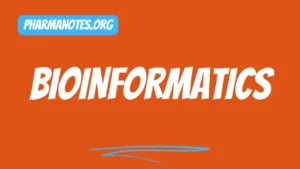Bioinformatics

Objectives
At the end of this lecture, student will be able to
• Define bioinformatics
• Understand the objectives of bioinformatics
Bioinformatics
What is Bioinformatics?
It is a inter disciplinary field that develops methods and software tools for understanding biological data
Intensive datas can be handled by bio informatics
It deals with the application of computers to collect, organize, analyse and validate the datas
• Biologists are increasingly finding that the management of complex data sets is becoming a bottleneck for scientific advances.
• Therefore, bioinformatics is rapidly become a key technology in all fields of biology.
The present barrier in bioinformatics include the
• education of biologists in the use of advanced computing tools,
• the recruitment of computer scientists into this evolving field,
• the limited availability of developed databases of biological information, and
• the need for more efficient and intelligent search engines for complex databases.
• Used in the field of molecular biology and genomics – hence massive amount of datas are available
• Databases – are available – stores data in a uniform and consistence manner – Contain DNA sequencing, DNA and protein structures
• GenBank– managed by National center biology information – 1ST DATABASE setup to store DNA sequencing data – 1982
• EMBL– European molecular biology laboratory – DNA and RNA sequences – they have collected information’s from the patents filed and scientific literatures – western Europe – 17 countries
• EC– Enzyme – Alternate names, catalytic activity, diseases associated with the deficiency of the enzymes
• Protein databank – 3D structures of proteins, nucleic acids, carbohydrates
• Protein modeling – Proteins – folding or threading
• Use of protein modeling – protein in 3D allows for greater understanding of protein functions – providing a virtual understanding
• Homology and similarity tools – used to analyse the similarity between two structures or sequences
• Molecular medicine – Most of diseases are related to genetic and environmental components – we can search gene directly associated with different diseases – better drugs can be invented
Application of Bioinformatics
Personalized medicine
• Pharmacogenomics– study how an individual’s genetic inheritance affects body’s response to drugs
• At present doctors use trial and error method to find best medicine to treat a particular patient
• In future doctors will be able to analyse the patients genetic profile and prescribe the best available medicine and dosage from beginning
Evolutionary studies
• Sequencing of genomes from organisms
• Helps to determine the tree of life
Microbial genomic application
• MGP – project – to sequence genomes of bacteria
• Useful in energy production, waste management, industrial processing
• Scientists can understand these microbes at fundamental level
• Isolate the genes that give them their unique abilities to survive under extreme conditions
Objectives of Bioinformatics
- Organizing biological data
• Bioinformatics organizes data in such a way that allows researchers to access existing information and to submit new entries
Eg. Protein databank – macromolecules
• Information stored in databank become useless until it is analysed
2. Analysis of data
• To develop tools and resources – helps in analysis of data
Eg. Having sequenced a particular protein – compare it with previously characterized sequence
• Development of such tools require extensive knowledge of computational biology and understanding of biology
3. Interpretation and application of data
• Third objective is to use these tools to analyse the data and interpret the results in a biologically meaningful manner
Summary
• Bioinformatics means to acquire, store, organize, archive, analyze, or visualize such data
• Objectives– Organizing, analyzing and interpreting data’s
Also, Visit:
B. Pharma Notes | B. Pharma Notes | Study material Bachelor of Pharmacy pdf